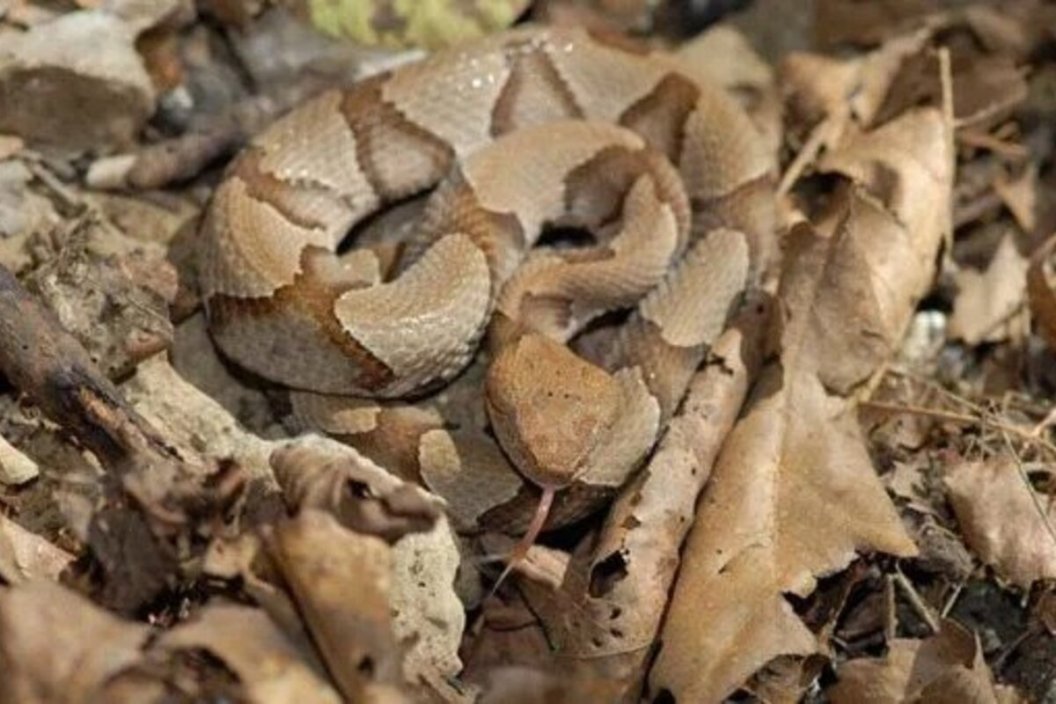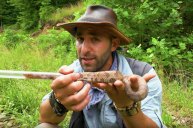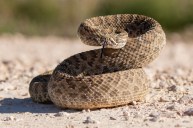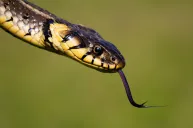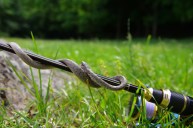Warmer months bring us a lot to get excited about, as group activities begin to move outside, those jeans and jackets go back in the closet, and we're finally able to jump into a pool or a river to cool off. But, the pros to spring and summer inevitably come with a few cons, such as mosquitos, excess heat, and, of course, snakes. While there are countless venomous snakes to watch out for across the country, few pose the same prevalence in the United Snakes as the copperhead, particularly in the spring when they start mating.
While bites are rarely life-threatening, they are very common, which is largely due to the snakes' inclination to "freeze" when encountered, resulting in people and small pets unknowingly stepping on them, often inducing a strike.
The start of copperhead season has many wildlife and law enforcement agencies taking the opportunity to warn the public to be on guard. In Oklahoma, the Oklahoma Sheriffs and Peace Officer organization posted warnings about the arrival of the young snakes and cautioned residents about the hiding spots these serpents frequent.
Avoiding trouble with this species of snake is easier than you might think this time of year, though, and we'll tell you how to do just that.
When are baby copperheads born?
Copperhead (Agkistrodon contortrix) is a term that refers to any of five different subspecies of venomous snakes found mostly in the southern United States. They are most often encountered in states like Missouri, Arkansas, North Carolina, Tennessee, Louisiana, Mississippi, Alabama, Kentucky, West Virginia, Texas, Georgia and more.
Many people get them confused with water moccasins or cottonmouths, which like the copperhead, are also pit vipers. Copperheads are also often mixed up with nonvenomous watersnakes, ratsnakes or cornsnakes. Adults don't usually grow very large, rarely exceeding 3 feet in length. They are usually light to dark brown with dark colored crossbands that form a rough diamond or hourglass-shaped pattern on their backs.
The mating season is typically from April to May, and then gives birth to live young in early fall. There's also a fall mating season in the fall, according to Smithsonian's National Zoo & Conservation Biology Institute.
What does a baby copperhead look like?
A litter of copperheads typically comprises between five and eight snakes, but 15-20 is possible. Thankfully, however, the young snakes are easy to identify.
The baby copperheads are about 7-8 inches long, with a light-brown and reddish coloration very similar to the adults. Just be warned, though, some younger snakes can appear to be more of a dark gray. But there are some other subtle differences that make the juvenile snakes easy to spot. For one, young copperheads have a distinct bright-yellow or green tail, which they keep for roughly a year before taking on a more natural color like the adults. There are some young copperheads that don't have this coloration, but if you see that chartreuse tail, you can be sure it's a baby copperhead.
Some young copperheads might also have a dark head or spots on the head that give away their identify. However, many harmless species like rat snakes and water snakes often have the same hourglass pattern as a copperhead, so it's best to just play it safe if you get close to one you can't identify for sure. One easy way to tell if you're dealing with something venomous is to observe the hourglass. Does the pattern extend down the sides of the snake to the ground? If so, it's likely a copperhead. If the pattern doesn't extend but rather is just kind of floating in the middle of the snake's back, you're likely dealing with a nonvenomous lookalike.
Are baby copperheads venomous?
https://www.youtube.com/watch?v=7tF96BHLiXY
Yes, a bite from a baby copperhead has the potential to be just as dangerous. Treat them with the same amount of respect you would an adult snake.
On the bright side, while copperhead bites can be very painful, they are very rarely deadly, according to the Florida Museum. There is no scientific evidence to back up the rumors that baby copperhead bites are somehow more dangerous, or that the young snakes can't control their venom.
Additionally, copperheads don't always inject venom when they bite. You should still seek medical attention no matter what, but you could get lucky and dodge the worst element of any negative snake encounter. Most of these problems are pretty avoidable, fortunately. Just keep your eyes peeled, keep a safe distance, and they'll likely leave you alone.
How to get rid of baby copperhead snakes
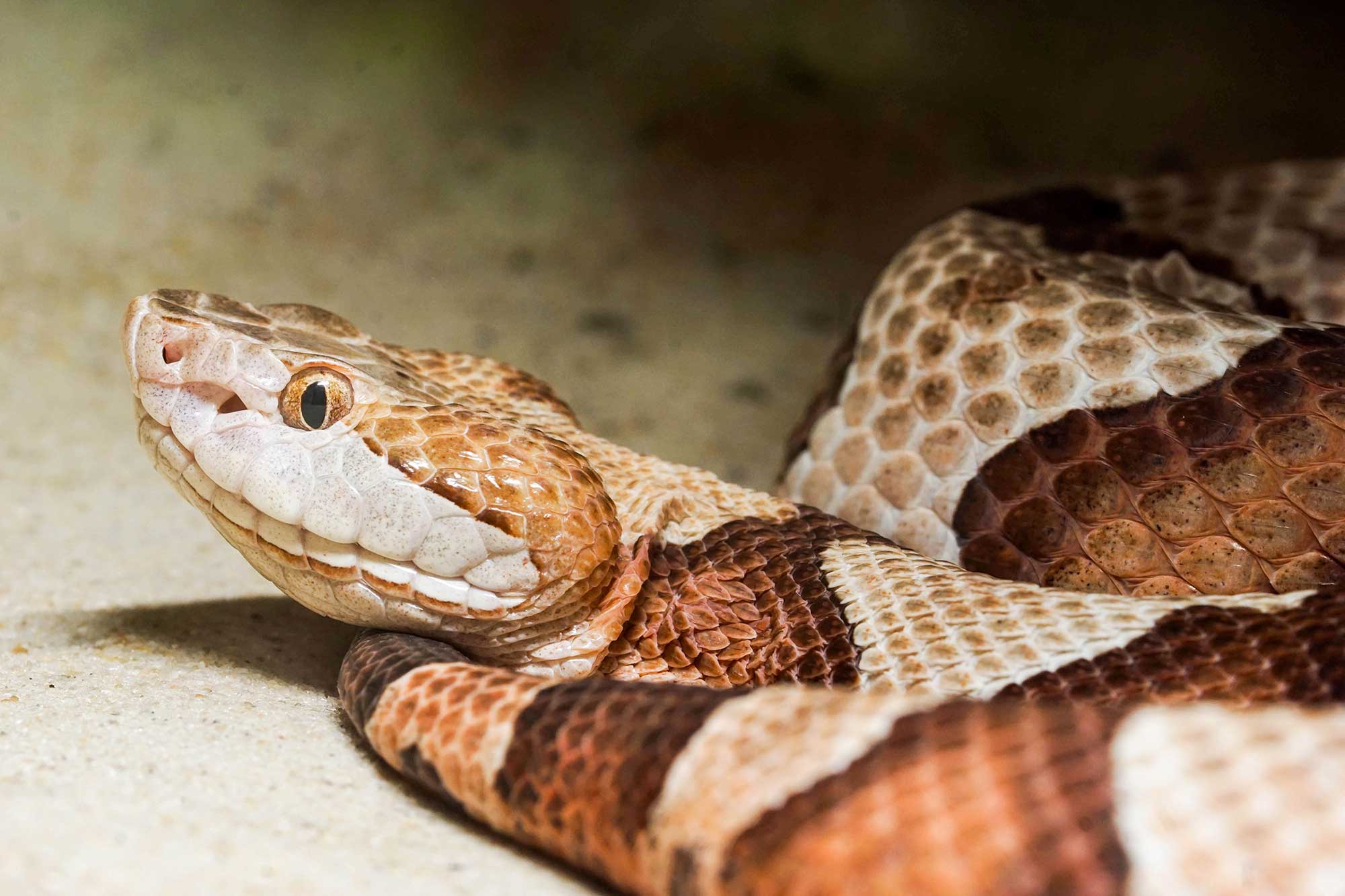
If you ever encounter one baby copperhead, you're likely to encounter another one. Contrary to urban legend, copperheads don't travel in pairs, but you might very well find more than one (or even a lot) in a small area after they're born.
For the actual removal of problem snakes, we recommend hiring an expert if you're dealing with something venomous. Many snake bites happen when people untrained in snake handling attempt to handle the problem themselves. There are "snake traps" and "snake paper" for sale online if you have a snake that frequents an area. If you decide to kill them, it's a good idea to check your local regulations before you try killing any snake, as it is not legal in all areas.
There are also basic precautions you can take to make your yard less attractive to all snakes. It starts with keeping the lawn trim and clear of fallen trees or wood that the snakes can use for cover. Bushes, rocks, flowerpots, electrical boxes, wood piles, coiled garden hoses and other common objects you might find in a suburban back yard can also serve as covers for serpents.
If you have children, make sure their toys are picked up when they're done playing with them, and keep your kids inside if you see a young snake in the yard. If you effectively eliminate cover options in your yard, the snake will likely keep it moving.
One thing to keep in mind to avoid bites is that humans are not a prey item for any snake, especially a copperhead. These snakes normally eat small rodents pests, so if you have a snake problem, you likely also have a rodent problem.
By taking a few common sense measures this time of year and having a healthy amount of respect for the snake, you can avoid problems and bites from copperheads.
For more outdoor content from Travis Smola, be sure to follow him on Twitter and check out his Geocaching and General Outdoor YouTube Channels.
NEXT: HORNETS, WASPS AND BEES: DIFFERENCES, IDENTIFICATION AND MORE
